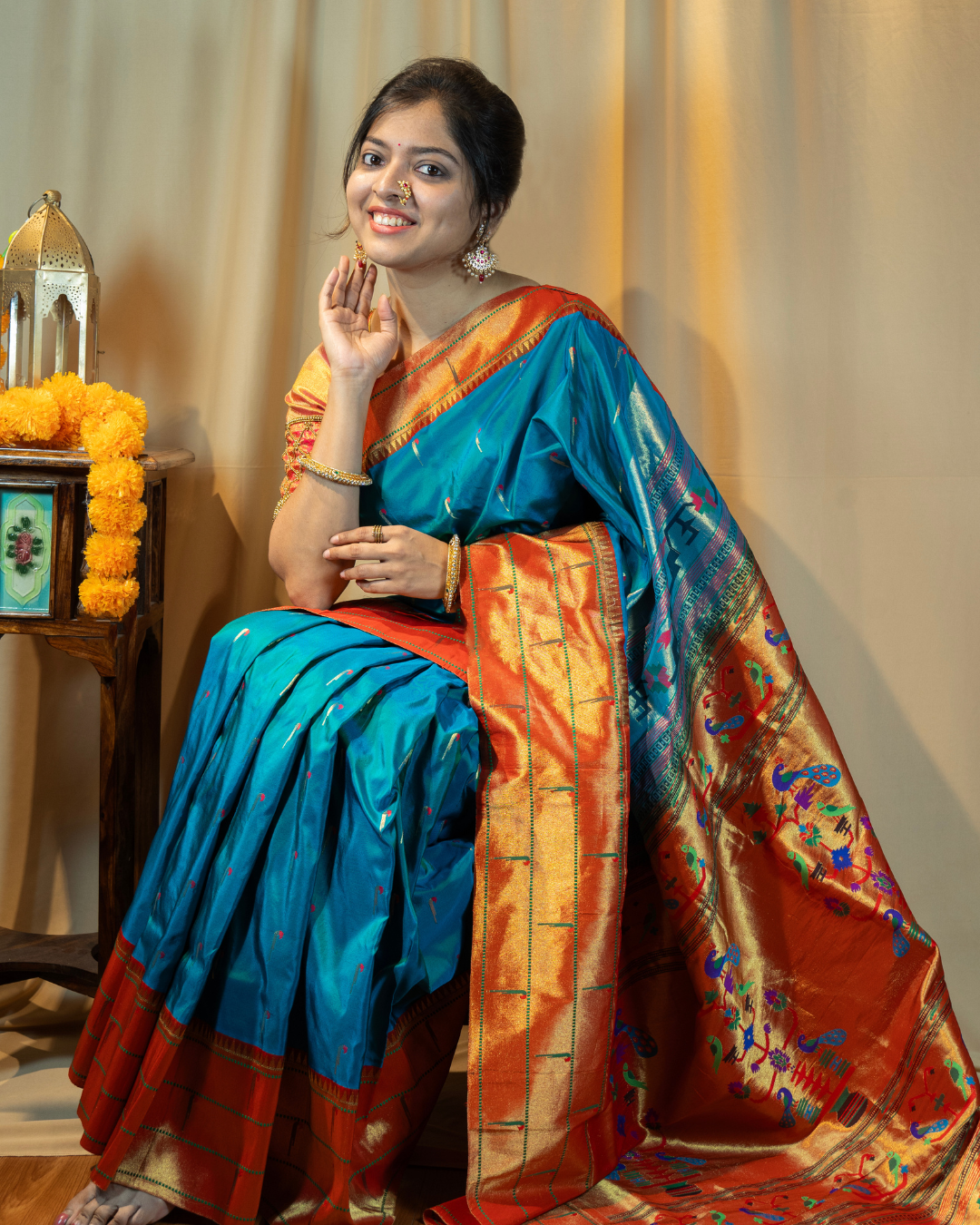How Paithani Sarees Represent India’s Cultural Diversity

Paithani sarees, often called the "Queen of Silks," are a magnificent representation of India’s rich cultural diversity. Originating from Maharashtra, these handwoven masterpieces symbolize a blend of history, tradition, and artistry. Their intricate designs and craftsmanship transcend regional boundaries, embodying the essence of India's diverse cultural heritage. Here’s how Paithani sarees reflect India’s cultural richness:
1. A Weaving Tradition Rooted in History
-
Cultural Origins: The craft of Paithani weaving dates back over 2,000 years, thriving under the Satavahana dynasty and later the Peshwas.
-
Royal Patronage: Paithani sarees were historically associated with royalty and the elite, symbolizing wealth and power.
-
Pan-Indian Appeal: Despite being rooted in Maharashtra, the artistry of Paithani sarees resonates across India, showcasing a shared appreciation for handloom excellence.
2. Symbolic Motifs Across Cultures
Paithani sarees are celebrated for their unique motifs, each carrying a symbolic meaning that connects with various cultural traditions:
-
Peacocks: A universal motif representing grace and beauty, revered in Indian mythology and art.
-
Lotuses: Sacred in Indian spirituality, the lotus signifies purity and divine beauty, making it a shared symbol across regions.
-
Geometric Patterns: The symmetry in Paithani borders reflects India's architectural heritage, seen in temples and palaces.
3. A Celebration of Festive Traditions
-
In Maharashtra: Paithani sarees are integral to Maharashtrian festivals like Gudi Padwa, Ganesh Chaturthi, and Makar Sankranti.
-
Across India: Their vibrant colors and luxurious zari work make them a favorite for weddings, Diwali, and other celebrations nationwide.
-
Bridging Cultures: The saree’s appeal lies in its adaptability, seamlessly fitting into diverse cultural and regional festivities.
4. A Fusion of Regional Influences
-
Zari Work: Influenced by Mughal-era craftsmanship, the zari work in Paithani sarees represents a blend of Deccan and Persian artistic traditions.
-
Natural Dyes: The use of natural dyes reflects the shared knowledge of eco-friendly practices across India’s weaving communities.
-
Tapestry Weaving: The intricate weaving technique resonates with other Indian handlooms like Banarasi and Kanjivaram, showcasing a shared love for intricate detail.
5. Diverse Color Palettes and Styles
-
Vibrant Colors: The vivid hues of Paithani sarees, from royal blue to emerald green, cater to the diverse preferences of India’s multicultural population.
-
Modern Adaptations: Designers have embraced Paithani motifs in contemporary styles, making them accessible and relevant across generational and cultural divides.
6. Preservation of Handloom Heritage
-
Artisan Communities: The craft of Paithani weaving supports weaver families, preserving traditional skills that have been passed down for generations.
-
Global Recognition: Paithani sarees are celebrated worldwide, becoming a symbol of India's diverse textile traditions and cultural pride.
7. Connecting Generations
-
Heirloom Value: Paithani sarees are often passed down as family heirlooms, creating a shared cultural bond across generations.
-
Bridging Urban and Rural: While rooted in the rural traditions of Maharashtra, Paithani sarees have found a place in urban fashion, symbolizing the interconnectedness of India's cultures.
Conclusion
Paithani sarees are more than just garments; they are a celebration of India’s cultural diversity and artistic excellence. By blending traditional motifs, regional influences, and modern adaptations, these sarees bridge the gap between India’s past and present. Wearing a Paithani saree is not just a fashion choice—it’s a tribute to the rich tapestry of India’s heritage, representing unity in diversity.
